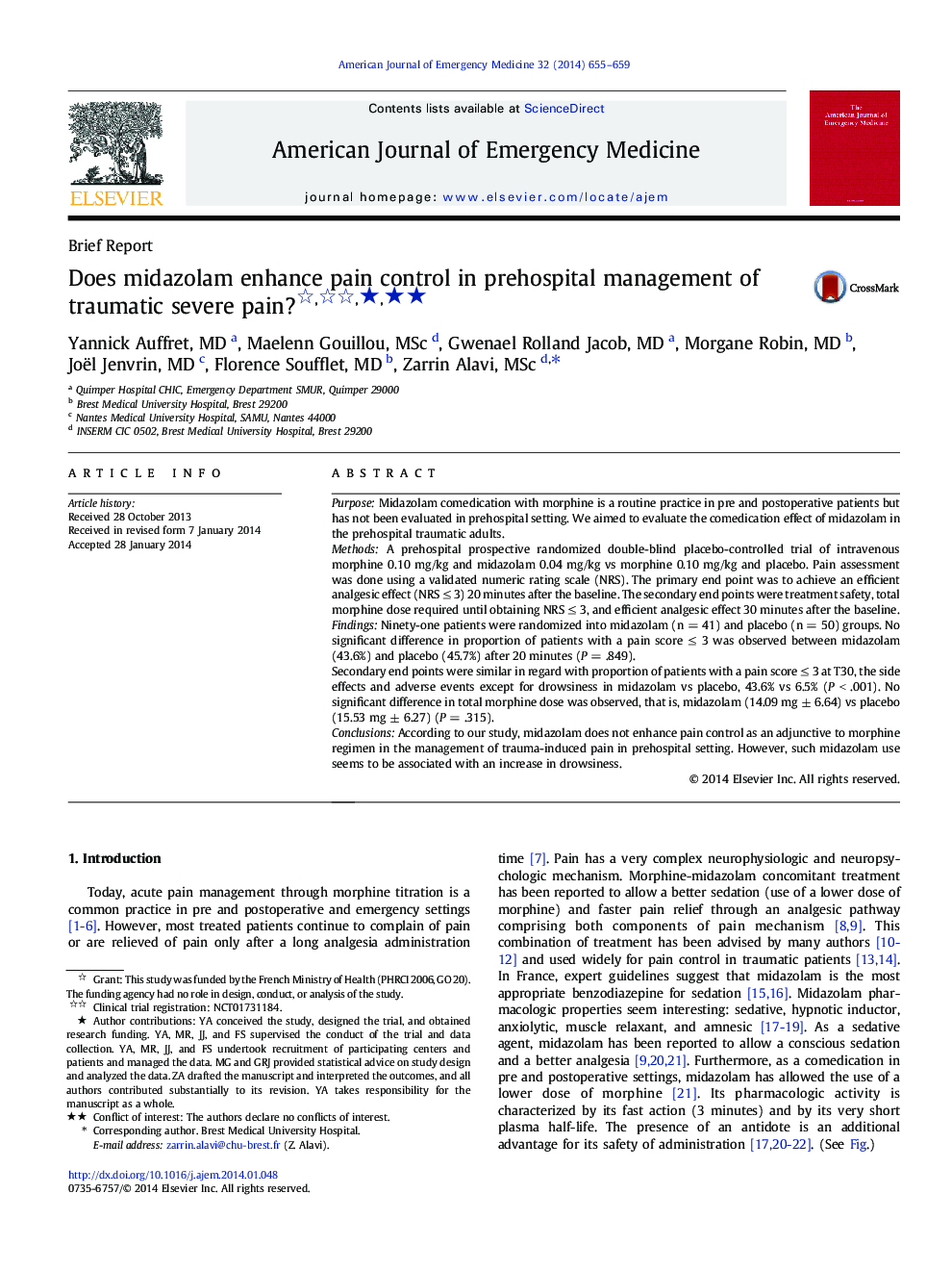| Article ID | Journal | Published Year | Pages | File Type |
|---|---|---|---|---|
| 3225067 | The American Journal of Emergency Medicine | 2014 | 5 Pages |
PurposeMidazolam comedication with morphine is a routine practice in pre and postoperative patients but has not been evaluated in prehospital setting. We aimed to evaluate the comedication effect of midazolam in the prehospital traumatic adults.MethodsA prehospital prospective randomized double-blind placebo-controlled trial of intravenous morphine 0.10 mg/kg and midazolam 0.04 mg/kg vs morphine 0.10 mg/kg and placebo. Pain assessment was done using a validated numeric rating scale (NRS). The primary end point was to achieve an efficient analgesic effect (NRS ≤ 3) 20 minutes after the baseline. The secondary end points were treatment safety, total morphine dose required until obtaining NRS ≤ 3, and efficient analgesic effect 30 minutes after the baseline.FindingsNinety-one patients were randomized into midazolam (n = 41) and placebo (n = 50) groups. No significant difference in proportion of patients with a pain score ≤ 3 was observed between midazolam (43.6%) and placebo (45.7%) after 20 minutes (P = .849).Secondary end points were similar in regard with proportion of patients with a pain score ≤ 3 at T30, the side effects and adverse events except for drowsiness in midazolam vs placebo, 43.6% vs 6.5% (P < .001). No significant difference in total morphine dose was observed, that is, midazolam (14.09 mg ± 6.64) vs placebo (15.53 mg ± 6.27) (P = .315).ConclusionsAccording to our study, midazolam does not enhance pain control as an adjunctive to morphine regimen in the management of trauma-induced pain in prehospital setting. However, such midazolam use seems to be associated with an increase in drowsiness.
